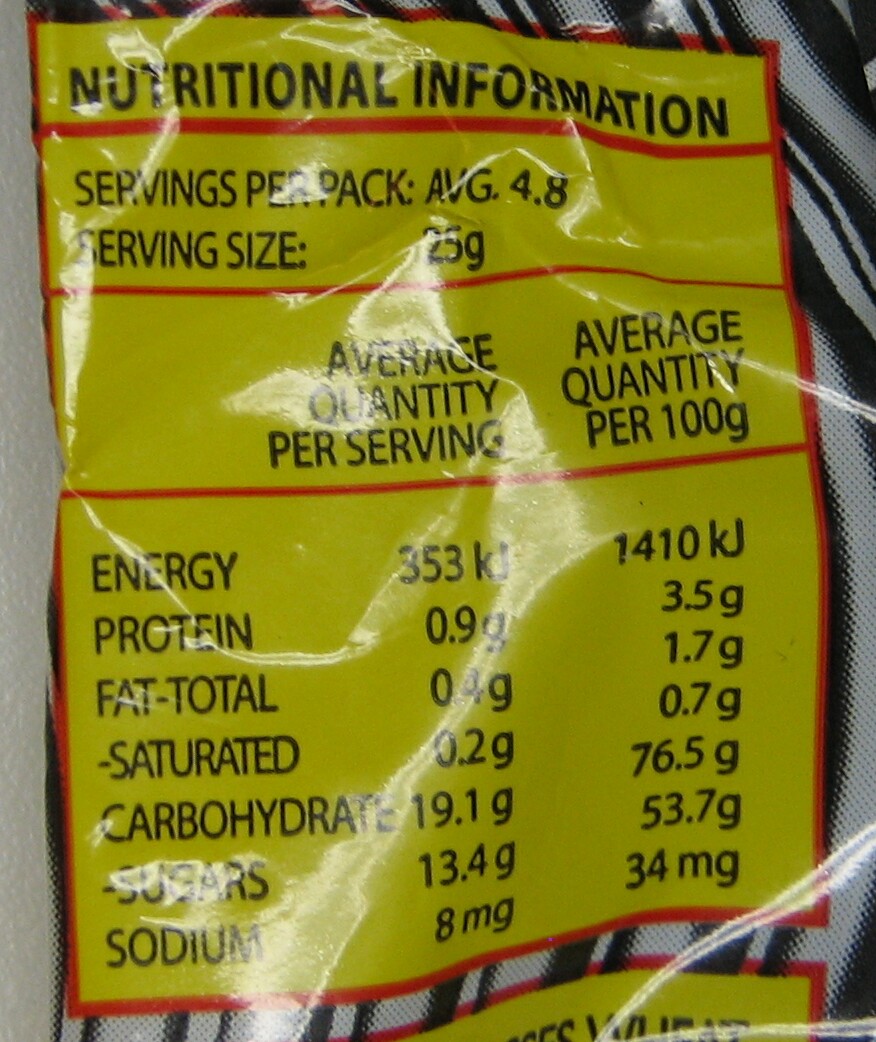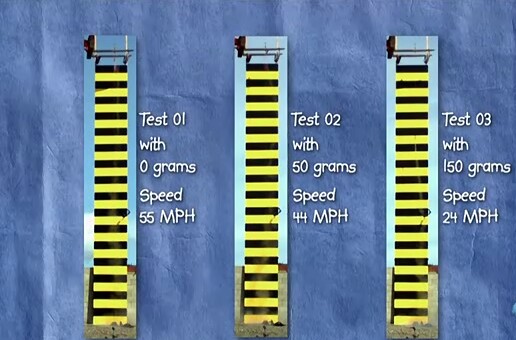By The Metric Maven
Filmmaker Amy Young, who is making a documentary film entitled: The State of The Unit: The Kilogram, has met her goal on Kickstarter. Thanks to everyone who contributed. $22.7 K so far and needs to raise a total of $26.8 K (i.e. $4,100 more) in the next seven days to fund her film. Please consider donating to her Kickstarter campaign here. If you have contributed already, thanks. Now the blog.
My Youngest sister has been a member of Weight Watchers (WW) for many years. It has worked well for her, and continues to do so. The WW members have discussion threads where they talk about how to compute Weight Watchers points from food labels. The use of grams and Calories (versus calories) and kilojoules is a perennial topic for discussion. Here is an entry by SCHILA which my sister shared with me concerning an Italian food label:
This causes a face-palm. I realize that it’s not her fault, it’s our lack of the exclusive use of the metric system in the US, and how the incompatible mixture of metric and non-metric units pervades our culture which is to blame. One can immediately see that the Nutritional Information (NI) is actually all metric—in a sense. The Calorie is a pre-SI unit of energy, which was replaced by the Joule in 1948. The Calorie was “metric” 65 years ago.
Definitions of the calorie fall into two classes:
- The small calorie or gram calorie (symbol: cal)[2] approximates the energy needed to increase the temperature of 1 gram of water by 1 °C at standard atmospheric pressure (101.325 kPa). This is approximately 4.2 joules.
- The large calorie, kilogram calorie, dietary calorie, nutritionist’s calorie or food calorie (symbol: Cal)[2] approximates the energy needed to increase the temperature of 1 kilogram of water by 1 °C. This is exactly 1,000 small calories or approximately 4.2 kilojoules.
The difference between a calorie and a Calorie is a factor of 1000 in the US. Why shouldn’t SCHILA be confused. The label has Cal 122 KCAL which is a capitalized Calorie abbreviation, which then tries to make it more understandable by putting it in all caps as KCAL, which of course could be confused for Kilo-Kilo-calories. No wonder the poor woman is on a discussion thread asking for help. The logical solution to me is to be done with calories and Calories (1000 calories or a kilocalorie), switch to SI (official metric) and use kilojoules—like the rest of the world.
Here is a package of licorice from Australia (courtesy of Mike Joy). It is advertised as one meter long. The front of the package has only one mass (weight) given: 120 grams. That’s it! You don’t need any other information.
On the back the nutritional information is:
We see that the Australian food vendors also use untidy numbers like 4.8 servings in a package. The serving size is 25 grams which is 353 kilojoules, that’s it! Every other description: protein, sugar, sodium and so on are broken out in grams or milligrams.
Ok, how many kJ’s do you get a day? Well in the US I generally see 2000 Calories on food labels as the recommended daily intake. This works out to about 8375 kilojoules. Look how many kJ’s you get! Doesn’t that sound better than 2000 Calories? Here is a short table to give you an idea of the range of kJ’s and the old way:
5000 kilojoules is 1194 Calories (1200)
5500 kilojoules is 1313 Calories (1300)
6000 kilojoules is 1433 Calories (1400)
6500 kilojoules is 1552 Calories (1500)
7000 kilojoules is 1671 Calories (1600)
8000 kilojoules is 1910 Calories (1900)
8500 kilojoules is 2030 Calories (2000)
So for many WW members somewhere between 5000 and 8500 kJ’s is the range for you to think about. The Australian Government has recently sponsored a push to get Australians to eat around 8700 kilojoules per day. Here is a page from their website:
So what does the back of a licorice label in the US look like? This is from Twizzler’s web page:
Not all that that different, other than the use of Calories (i.e. kilocalories). So what’s the big deal? Well, the big deal is that because the US is not exclusively metric like Australia, very few Americans have any idea what a gram is. (It is about the weight of a plain chocolate m&m). This lack of exclusive metric adoption in the US obscures dietary data that is readily available. Any confusion will cause many people to just not bother with the nutritional information.
Should we go back to Ye Olde English units on food packaging?—well they’re actually Olde English sizes used prior to the English reforming their units in 19th Century, but we’ll let that pass for now. Some people who believe claim they are trying to help the public say yes. These people are from the anti-metric Wall Street Journal, and like James Taranto are there to yelp—I mean “help.” Their anti-metric “Numbers Guy” seems to be more interested in running a numbers racket than actually enlightening people about numbers.
When the Wall Street Journal is on the side of the Center for Science in the Public Interest–watch out–what they have in mind is not in the public interest. They want teaspoons and tablespoons back! I’ve already written about how confusion between the two, and the lack of metric in the US kills about 98,000 persons in the US each year. It would also make our nutritional labeling completely incompatible with the rest of the world—which all use metric. They want to swap mass (grams) for volume (Tsp, Tbl)? Isn’t it bad enough we use ounces interchangeably for weight and volume already? Do you think 8 (by weight) ounces of cheese doodles is a cup (8 oz by volume) of them? The Wall Street Journal has never found a bad Weights and Measures idea they didn’t like.
The frustration the rest of the world has with us is completely understandable and surfaces on the WW discussion thread:
All I can say is You Go Girl!
What started this WW discussion thread was a question about the nutrition label on the back of an Italian food product. If all our US packaging was in teaspoons and tablespoons, and grams became even more unfamiliar, this would further alienate us from 95% of the worlds population and their products. I guess the Wall Street Journal just can’t help themselves—they like trade barriers. Once again the inability of our legislators to pass mandatory metric only legislation for the US, with a plan, and funding, and so on, hurts the nations physical and economic health. Congress has been goofing around since 1866 thinking about metric, isn’t it time they finally got to work and dealt with the metrication issue?
If you liked this essay and wish to support the work of The Metric Maven, please visit his Patreon Page and contribute. Also purchase his books about the metric system:
The first book is titled: Our Crumbling Invisible Infrastructure. It is a succinct set of essays that explain why the absence of the metric system in the US is detrimental to our personal heath and our economy. These essays are separately available for free on my website, but the book has them all in one place in print. The book may be purchased from Amazon here.

The second book is titled The Dimensions of the Cosmos. It takes the metric prefixes from yotta to Yocto and uses each metric prefix to describe a metric world. The book has a considerable number of color images to compliment the prose. It has been receiving good reviews. I think would be a great reference for US science teachers. It has a considerable number of scientific factoids and anecdotes that I believe would be of considerable educational use. It is available from Amazon here.

The third book is not of direct importance to metric education. It is called Death By A Thousand Cuts, A Secret History of the Metric System in The United States. This monograph explains how we have been unable to legally deal with weights and measures in the United States from George Washington, to our current day. This book is also available on Amazon here.










